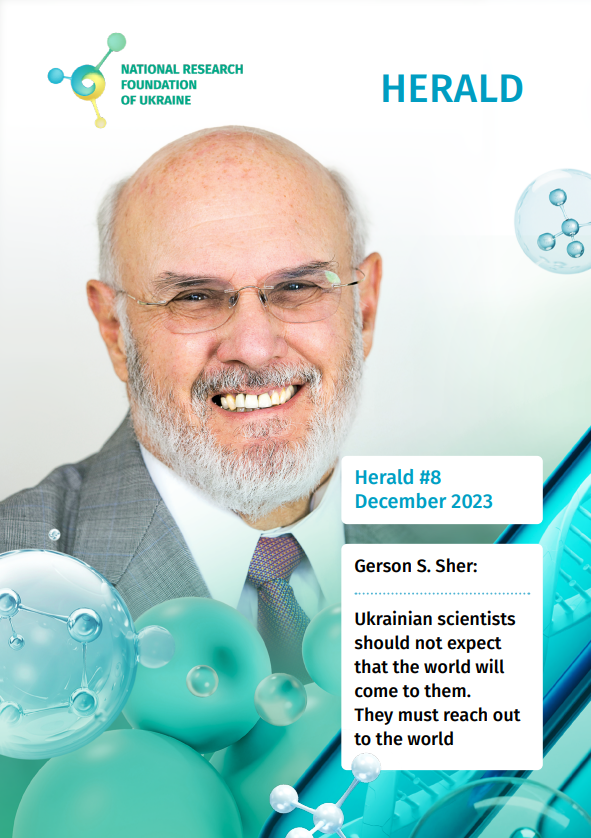
How to prevent science from being used as a tool of russian propaganda? Is the global scientific community aware of the needs of Ukrainian researchers during the war? How can we talk about the needs of Ukrainian science so that it is heard? And how can we build a system for introducing science-intensive innovations into production?
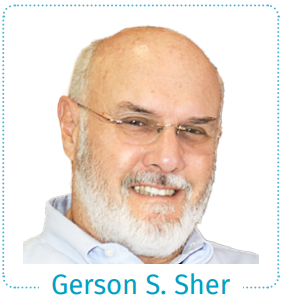 We asked these and other questions to Dr. Gerson S. Sher, PhD, member of the Board of International Counselors of the National Research Foundation of Ukraine. Dr. Sher was a program coordinator at the US National Science Foundation, served as Chief Operating Officer of the International Science Foundation from 1993 to 1995, and was the Founding President of CRDF Global.
We asked these and other questions to Dr. Gerson S. Sher, PhD, member of the Board of International Counselors of the National Research Foundation of Ukraine. Dr. Sher was a program coordinator at the US National Science Foundation, served as Chief Operating Officer of the International Science Foundation from 1993 to 1995, and was the Founding President of CRDF Global.
– Dr. Sher, you are the author of the book “From Pugwash to Putin: A Critical History of U.S.-Soviet Scientific Cooperation,” and you know very well what happens when science is used as a tool of propaganda. Have you noticed the very use of russian researchers and russian science during the war unleashed by russia against Ukraine? Have safeguards been developed against russia’s attempts to influence the global research community with the help of russian researchers? (In other words, have lessons been learned?)
– To your first question about safeguards, no, in fact, and I cannot say that I am surprised. To the second question about lessons learned, I hope so.
In my forty-year career of managing scientific cooperation with the Soviet Union I have had many opportunities (through 64 visits) to interact on a personal level with Russian and Ukrainian scientists. I developed a deep respect for the achievements of both, but I clearly understood that Ukrainian science and scientists, in the Soviet period, were severely discriminated against by Moscow.
Russian scientists’ comments about Ukraine and its science were condescending at best, and Ukraine and other non-russian countries were referred to as ‘provinces’. Therefore, when I headed Soros’s International Science Foundation I pledged to negotiate, structure and administer the Foundations’s agreements and programs with new countries, including Ukraine, in an absolutely equitable manner and importantly, with respect.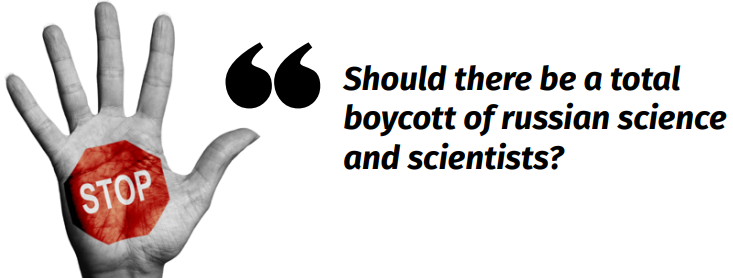
After the Revolution of Dignity, and especially after the russian invasion of February 24, 2022, a new question arose: Should there be a total boycott of russian science and scientists?
I publicly advocated a total boycott, but it was not the most popular position among my US colleagues and most US scientists in general.
And yet, many supported the boycott, which excludes any form of contact or collaboration with russians who were employed in government institutions. That became the U.S. Government’s official position as well. Shamefully, however, some top US scientists, widely respected people and former and current leaders of government and private institutions, advocated the opposite, for example with a Letter to Science entitled, ‘Don’t forget Russian science’. I was very saddened by this Letter, because these were distinguished scientists for whom I had immense respect.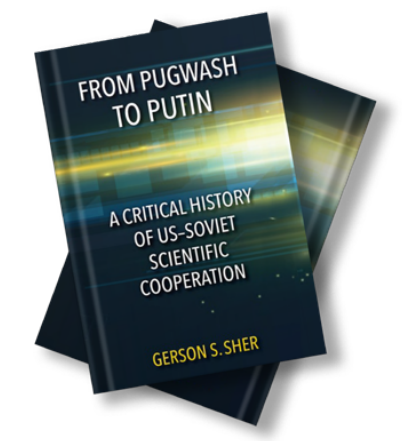
Regarding your question about ‘safeguards’ against this kind of thinking, I have never heard of them and cannot imagine how and by whom they could be implemented. Perhaps there could be a blacklist of russian scientists who have actively participated in russian propaganda efforts or who have publicly made offensive statements. But who would create it, who would manage it, and, importantly, would it stop the abuse? I doubt it.
– The system of research funding in Ukraine (and, first of all, basic funding) has long remained a rudiment of the Soviet system of science funding. This system began to change after the Revolution of Dignity. The NRFU was established, grant calls of the Ministry of Education and Science were launched, and the share of competitive funding began to increase. How these changes are perceived from the point of view of a person who has seen transformations and progress in the research field in the world, as well as in the Baltic states and Poland in recent decades?
– I think the question should be put differently. The issue is not how much basic research is being funded in Ukraine, but how it is funded and who funds it.
Ukraine is the last outpost of the Soviet scientific system. All other post-Soviet countries have transitioned, to one extent or another, to grant-based funding as an important element of the system. They long ago established new institutions to manage the process. In Ukraine, however, the old Soviet system of top-down funding of research through huge academies of sciences was still in place.
It was only in 2019 that Ukraine was able to establish the National Research Foundation of Ukraine which launches calls and funds the winning projects. The creation of the NRFU was an extremely important moment of reform in Ukrainian science, but unfortunately it was interrupted by the russian invasion of Ukraine on February 24, 2022. It is remarkable that the NRFU has managed, in the wartime, to build international partnerships with European and North American research foundations. This is the great merit of the Foundation’s managers.
The method of funding is extremely important (it is even more important than the research being funded). Since public funds are used, transparency is a key factor. The public, and especially the scientific community, must clearly understand the process, the criteria, and the way decisions are made. Critically important is that this includes very strict rules regarding conflict of interests (even the appearance of conflict of interests). If the decision-making process is obscure to the public, the entire scientific enterprise will be compromised. For this and other reasons, it is usually best to embed that part of the science system in a separate institution.

Speaking of basic research, ratios of the sources of funding are an important indicator. In the U.S., the federal government’s share of funding of basic research is less than half. According to the NSF’s authoritative Science Indicators (2020), in 2017 the U.S. federal government was the source of 42.3% of basic research funding, followed by the business sector (28.0%), non-federal (state) governments and nonprofits (15.6%), and universities and colleges (13.4%). (In other countries, such as in Europe, the proportions will differ, but the form is essentially the same.) In post-Soviet economies, the ratios are strikingly different: the share of the public sector is very high, while the business sector’s in some countries is close to zero.
It is critically important to understand the gap between basic research and technological innovations. To close it, it is not enough to simply change the ratio of financing. It requires systemic reforms and, in particular, the active participation of the business/industry sector in the national R&D system.
– After the full-scale invasion of Ukraine by russian troops, Ukrainian science is under threat. Dozens of research institutions and universities were destroyed and damaged, thousands of researchers moved abroad or to other regions of Ukraine, and many teams broke up. The support of the global research community for Ukrainian researchers is critically important. It is grants from international foundations, academies and universities that help Ukrainian researchers continue their research and earn some money (in particular, for living). In your opinion, do Ukrainian researchers communicate effectively with the international research community? Do they sufficiently (fully) communicate their needs? If not, how do you think they can speak up?
– My impression is that they do not. The main issue, however, is not (only) whether Ukrainian scientists communicate their needs to the national government and the international community, but whether they follow up these communications with positive actions and initiative.
First, there must be someone who listens. In wartime, this is particularly challenging since the needs of war overshadow everything else. Unfortunately, there is a political culture in of de-emphasizing the need for funding of science in Ukraine. Establishing a competitive grant-making organization two decades later than in other post-Soviet countries is a sad indicator of this state of affairs.
But appeals for funding, especially foreign funding, are only a part of the whole picture, and the least sustainable part. It it is essential for Ukrainians to understand that all support initiatives (even those for short-term) are predicated not merely on giving out money for basic subsistence, but on research collaborations with scientists from other countries. The international scientific community may respond to requests for support, but I doubt it will last long. Let me put it this way: Ukrainian scientists will get short-term emergency support, but they should not expect that the world will come to them. Instead, they must reach out to the world.
I have been very encouraged by the NRFU’s initiatives. The new partnerships with the Netherlands, Switzerland, the U.K., and the United States are very important because they help Ukrainian researchers establish long-term relationships with leading scientists elsewhere. Eventually these budding relationships may develop into deep, ongoing involvement in well-funded projects, with the active participation of younger scientists, which is a sine qua non for Ukrainian science’s future.
But there is a serious problem. If you expect the world to come to you and fill your hands with money for subsistence, you will eventually fail. You must take the initiative to reach out to the world to build professional partnerships. This may sound like a tall order for Ukrainian researchers, who have been isolated, even protected, from the rest of the world, but it is more in the minds than in practical opportunities. Foreign scientists are in a very poor position to search out potential Ukrainian partners. As far as I know, there are no public, searchable Ukrainian databases of funded research projects as there are throughout the rest of the world. For instance, there are many publicly available databases in the West that offer an excellent opportunity for partners search. You should take the personal initiative to correspond directly with these individuals. Here, it is not enough merely to ‘present’ yourself as a possible partner, but to convince the person you found through your searches that you can uniquely contribute to and promote their goals in the project. This will be a challenge for many, but it is essential. Let me say it again: Ukrainian scientists should not expect that the world will come to them. Instead, they must reach out to the world.
– What international initiatives that help Ukrainian researchers would you note over the past two years, during the full-scale war?
– I am most familiar with initiatives from the United States, in particular, two major initiatives. The first one, chronologically, was taken almost immediately after the 2022 invasion, by the U.S. National Academies of Science, Engineering, and Medi cine (NASEM). NASEM and the Polish Academy of Sciences (PAN) partnered to accommodate the scientists temporarily in PAN institutes, with significant financial support. More recently, NASEM and PAN used that foundation to bring scientists still in Ukraine into merit-based collaborative research projects. To my knowledge, this was among the first initiatives to bring financial support directly to scientists remaining in Ukraine. All this was possible because NASEM aggressively sought money from major funders – primarily private foundations – amounting eventually to millions of dollars. It was and is unprecedented.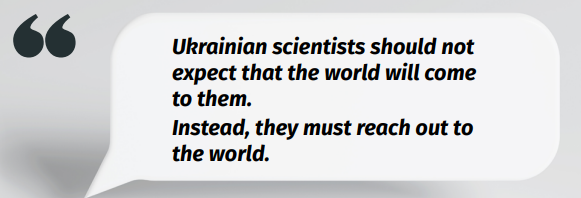
A very important second initiative is more recent, with the U.S. National Science Foundation (NSF) as the initiator. Here, NSF developed a complex and wholly new strategy to support the highest-quality collaborative research, bringing into it not only Ukrainian and U.S. scientists, but also researchers from the Baltic countries and Poland. In this case, too, there is financial support for the Ukrainian participants, through NASEM. The lead Ukrainian agency for this initiative, appropriately, is NRFU. I would like to commend the NRFU’s scientific and executive leadership for their hard work in bringing this complex initiative into being.
What both major initiatives have in common is that they are based on grassroots, collaborative, merit-reviewed, competitively awarded research projects. They are not hand-outs or short-term emergency support. Their goal is, first, to bring Ukrainian scientists into the world scientific community through personal, sustainable scientific partnerships; and second, to do so based on the merit-based, competitive procedures. It is my view and experience that only through experience in seeking grant support in this way will Ukrainian science and scientists be able to become part of world science in a sustainable way.

– How can the international community contribute to further reforms in Ukraine?
– I believe that the more Ukraine harmonizes its funding policies, procedures, and practices with foreign practices, the more success it will have in attracting foreign funding. This is a challenge where the NRFU must play a leading role as Ukraine’s premier research grant-making agency. If the NRFU is successful in demonstrating the effectiveness of competitive grantmaking and its benefits for a broad range of scientific and higher educational institutions in Ukraine, more partnerships and more money will follow.
By the way, the additional funds may not come directly from the grant agencies themselves, but from other sources available to the foreign collaborators. Such is the power of high-quality collaborative research that success can beget success and support through other channels.
– Dr. Sher, you are a member of the Board of International Counselors of the National Research Foundation of Ukraine. As an counselor to the Board, what would you advise the Foundation?
– First, let me say that I believe that the Foundation is doing an amazingly good job under Olga Polotska’s leadership. She has an excellent understanding of the core principles and procedures of scientific grantmaking, and she has put them into practice. From my limited perspective, however, the technology of grantmaking must catch up with the scientific and financial part. The NRFU is in deep need of foreign reviewers for its proposals, but it is a very cumbersome online process, which may actually act as a deterrent, for such reviewers to enlist. The NRFU would also do well to follow the example of public foreign grantmaking organizations to implement an online, publicly accessible tool which would allow searching for all grants provided by the Foundation. Not only can this build public confidence in the Foundation, but it will also allow foreign researchers to more effectively find Ukrainian partners and initiate collaborations.
– The United States has built a special system for introducing high-tech innovations into manufacturing. What do you think Ukraine should start with to ensure that research results are implemented into manufacturing?
– Here is where government and the scientific community need to be very creative and open to innovation – not only in technology, but also program design. The most important thing is to bring business and industry into science education and research at all levels, in a wide variety of ways. For example, one of the oldest programs of this type in the U.S. is the Small Business Innovation Research (SBIR) program, which is present under law in all U.S. research agencies. SBIR has three phases. In the first, it provides direct government support on a competitive basis to university researchers who have an innovative idea. If the first year is successful, a private company is ready to share the financial support in the second year and again, if successful, to assume full responsibility in the third year.
It’s an excellent model. But will it work in Ukraine, where industry seems to be oblivious to the importance of scientific research to innovation and their own bottom lines? Everyone in Ukraine with whom I have spoken are highly skeptical. If there is no industry support or involvement in research, especially applied research, then Ukraine will have a serious problem. You simply cannot have technological innovation and market success in today’s global, competitive knowledge economy in the absence of the private sector.
Interviewed by Svitlana GALATА

